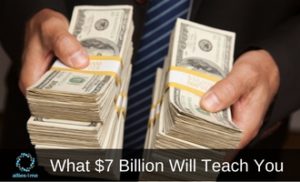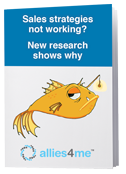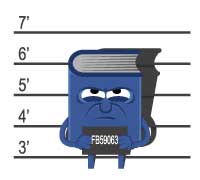Spending $7 billion on advertising buys you some powerful insights. P&G’s Marc Pritchard does that every year and he has strong thoughts on social media, advertising, emotion and creativity. Do you want free research? Tap into the insights of the world’s largest advertiser.
Shifting to a Digital-First Approach to Branding
Marc keynoted the Association of National Advertiser’s Media Leadership Conference in March of 2015 where he shared the following thoughts [1]. P&G views digital technology as an unprecedented delivery machine. Consumers are increasingly spending their time there. Globally, half of media viewing time is on digital with one third of that on mobile. P&G is already seeing above-average returns on investment and expects to further expand their share of digital investment. Marc finds digital media to be “more efficient and more effective than any medium advertisers P&G worked with in the past.”

Learn lessons from the world’s largest advertiser
Notice this is a branding strategy – not direct response advertising. We often encounter clients who focus singularly on direct response as opposed to branding. Yes, everyone likes immediate response to advertising, but P&G is using digital media to build their brand. Brand building is a long-term investment. Plan to spend 2 years on a branding campaign before you start seeing results.
Branding is often confused with mind-share and top-of-mind presence. But effective branding is about creating an immediate positive emotional response when B2B and B2C consumers think of your brand. Dream Cars Austin is infamous for the annoying ads narrated by the owner. Yes, they have mind-share, but it is a negative emotional experience when they come to mind. This is not good branding.
We recommend a strong Inbound Marketing program to build trust with your prospects. It is focused on creating that positive emotional experience when customers thing of your brand. You are the company that teaches and equips them to do their job better.
 New research shows that buyers and sellers are misaligned. Get the latest survey results from over 500 global companies.
New research shows that buyers and sellers are misaligned. Get the latest survey results from over 500 global companies.
Moving Away from Targeted Facebook Ads
Despite Facebook’s ability to deliver ads to precise psychographic groups, P&G is moving away from targeted ads [2]. The reason is simple. Sales stagnated when they tried precision targeting. Sales expanded when they broadened the target audience. Don’t think this is because P&G is still learning the medium. Marc calls Facebook COO Sheryl Sandberg directly to talk about their ad spend on Facebook. I’m sure Facebook is delivering the best service and performance to the world’s largest advertiser. And the conclusion is targeted ads have been a flop for P&G.

Facebook targeting doesn’t pay off
For example, P&G targeted Febreze air freshener ads to pet owners and households with large families. Makes sense – right? But that didn’t move the needle. They opened up the ads to anyone over 18 and sales started increasing. Shocking, but those are the facts.
Remember, Facebook charges more for targeted ads. So P&G won twice over. They got more sales at a lower cost per ad.
The lesson is always test your assumptions and don’t underestimate the unpredictability of people.
The Power of Emotion
Your path to insolvency and poverty is assured by clinging to the notion that people buy your products or services because the facts favor your product. Yes, we are all captivated by our emotions more than we like to believe. At this point, the engineers and accountants are indignantly stating they are different and not ruled by emotions. Science says otherwise. In fact, experiments from almost 100 years ago started revealing that the cerebral cortex has a much weaker grasp on truth than we like to believe. Split brain experiments showed that the cognitive part of the brain invents reasons to support decisions the emotional part of the brain already made. Yes, they really did cut brains in half. And no, you don’t even realize you are lying to yourself. Ever wonder why 75% of eyewitness-based convictions were overturned when DNA evidence was introduced? [3]
P&G understands the power of emotion. Marc Pritchard says it well: you need a great consumer insight coupled with a great brand idea to connect with customers emotionally [4]. In fact, you don’t hear Marc talking about the merits of their products. He is focused on the power of the brand, and for Marc, that is about emotions. Again, this is coming from someone who oversees $65B in revenue and spends more than 10% of that on advertising.
Creativity and Authenticity
Pritchard often speaks about the importance and power of creativity. He warns against getting caught in a “content crap trap” which is creating content to fill the void [5]. While admitting that P&G falls victim to the “content crap trap” (remember – authenticity), Marc urges advertisers to rise up and create incredible content.
“Embrace creativity as a uniquely human endeavor – humans have this remarkable ability to extract ideas that leave us laughing, smiling, crying, feeling, enjoy and acting.” – Marc Pritchard
Notice the progression in Marc’s quote. We must feel first before we act. Does your advertising make people laugh, smile or cry? If you want people to act, you must make them feel first.
But creativity requires that you do something unique from your competitors. Otherwise, you are average, normal and predictable. The only feeling elicited is boredom. Does your content make people feel something, or do you travel the safe road of copying what your competitors do?
One of the risks of outsourcing your social media is losing the authentic voice of your company. Marc’s experience is consumers quickly sniff out when you aren’t authentic. Do all of your published testimonials say you walk on water? Do you hide the negative testimonials? Do you think customers won’t figure that out? The paradox is, you build more trust by being authentic and admitting weaknesses.
Summing it up
Remember, all advertising is not about direct response. Build your brand by making people feel something. Build your brand on digital channels. Be authentic. Be creative. Don’t assume highly targeted digital audiences are the right answer for you. And we recommend a solid Inbound Marketing strategy that builds trust before it tries to sell.
 New research shows that buyers and sellers are misaligned. Get the latest survey results from over 500 global companies.
New research shows that buyers and sellers are misaligned. Get the latest survey results from over 500 global companies.
[2] http://www.wsj.com/articles/p-g-to-scale-back-targeted-facebook-ads-1470760949
[3] http://www.sciencemag.org/news/2014/10/how-reliable-eyewitness-testimony-scientists-weigh
[4] http://www.forbes.com/sites/avidan/2015/03/12/why-pg-is-quickly-shifting-to-a-digital-first-approach-to-building-brands/#3542a5e92753
[5] https://www.luxurydaily.com/pgs-marc-pritchard-advertising-has-terrible-reputation-that-is-why-we-are-trying-to-re-name-it-content/
